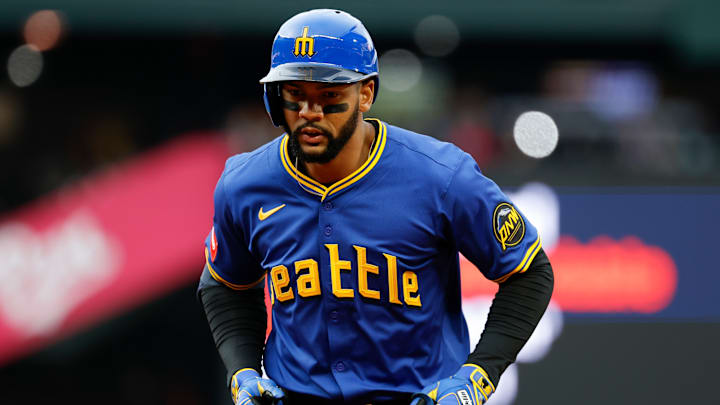The Kansas City Royals’ need for outfield help isn’t exactly a secret. It’s been one of the franchise’s most glaring weaknesses for years now. While the current group offers above-average defense, they simply don’t produce enough at the plate to offset the offensive void. That reality became impossible to ignore when the Royals demoted MJ Melendez — once imagined to be part of the solution, due to his ongoing struggles at the plate.
The numbers tell the story. Since 2019, no outfield unit in baseball has posted a lower collective wRC+ than Kansas City’s 83. Five straight seasons of below-average production have turned this from a slump into the franchise’s new normal. That’s why when 26-year-old Leody Taveras hit the waiver wire this week, many expected the Royals to take advantage. After all, Taveras — just a couple of years removed from flirting with a 20/20 season — offered a low-risk shot at upgrading a stale outfield spot.
But the $3.73 million price tag attached to his remaining salary was enough to make Kansas City pass. According to a report from Ken Rosenthal of The Athletic, the Royals gave serious consideration to claiming Taveras before ultimately backing away, allowing the Seattle Mariners to swoop in.
Royals’ missed opportunity highlights lingering outfield problem
Taveras has already made his presence felt in Seattle, driving in a game-winning run in his Mariners debut and collecting two RBIs while hitting .250 through his first two games. No one is suggesting that Taveras alone would have turned the Royals into contenders, but when your outfield ranks among the worst in baseball, it’s hard to argue that taking a chance on a still-young, toolsy player wouldn’t have been the worst gamble.
The Royals’ reluctance to take on a modest salary at this moment signals that the front office could be treading lightly so they can maintain maximum flexibility before the trade deadline. Kansas City opened the year with a $126 million payroll — their highest since 2017 and the third-largest in franchise history — so it's possible they're looking to be prudent with every forthcoming dollar they spend.
With the front office showing resistance to spend further at this moment, the Royals appear committed to riding with internal options at least until the trade deadline. Realistically, that likely means the next meaningful outfield reinforcement to make a big impact won’t arrive until Jac Caglianone — Kansas City’s top power-hitting prospect — forces his way to the big leagues after moving to a corner outfield spot. And with no clear timetable for that promotion, the current outfield group looks locked in for the long haul.
The good news? Despite their flawed outfield, the Royals are winning. After a slow start, Kansas City has surged back and well above .500, climbing to third place in the AL Central and boasting one of the best records in the American League thanks to a red-hot stretch that has seen them win 16 of their last 18 games.
Still, the underlying issue remains. If the Royals want to sustain this momentum, they’ll eventually have to address their biggest weakness. And when they had the chance to do so this week, they passed.
